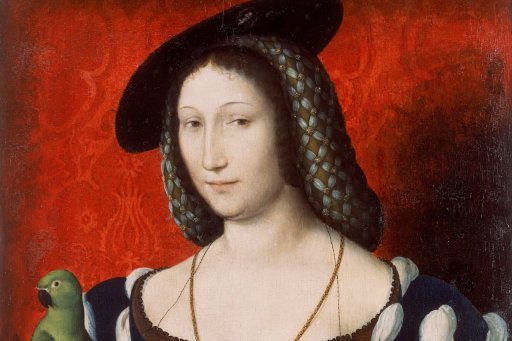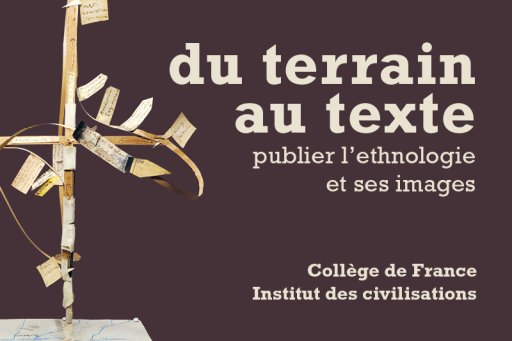Lecture tours
The Collège de France offers one-hour lecture tours organized by the designers of the exhibition "Mesha and the Bible: when a stone tells the story".
October 8, 2018 from 6 pm to 7 pm: 2 lectures lasting 30 min.
- "Découverte de la stèle de Mésha, restitution et présentation au musée du Louvre" by Isabel Bonora-Andújar is a doctor of archaeology and a study engineer at the Louvre Museum's Department of Oriental Antiquities.
- "Mésha ou la Bible, qui a raison?" by Hervé Gonzalez, study engineer at the Collège de France, chair of The Hebrew Bible and its Contexts, member of UMR 7192.
October 15, 2018 at 6 p.m. and 6:30 p.m.: 30-min. lecture.
- "Charles Clermont-Ganneau, itinéraire d'un professeur au Collège de France" by Loraine Marcheix, documentary resources officer, head of IPOA libraries.
October 15, 2018 at 6 p.m.: 30-minute lecture.
- "Découverte de la stèle de Mésha, restitution et présentation au musée du Louvre" by Isabel Bonora-Andújar is a doctor in archaeology, study engineer at the Louvre Museum's Department of Oriental Antiquities.
October 15, 2018 at 6:30pm: 30-minute lecture.
- "Mésha ou la Bible, qui a raison?" by Hervé Gonzalez, study engineer at the Collège de France, chair of The Hebrew Bible and its Contexts, member of UMR 7192.
Visits and lectures free of charge ( registration required).

Photograph of the reconstructed stele annotated in Clermont-Ganneau's hand. Laminated print conserved at the Académie des inscriptions et belles-lettres. 47 x 30 cm. 1878. Photo credit: P. Imbert.
150 years ago, in 1868, an Alsatian missionary by the name of Klein discovered a 120-centimeter-high black basalt stele in the country of the ancient Kingdom of Moab, present-day Jordan. The discovery caused quite a stir, and the Bedouins, caught up in tense negotiations with the Europeans, and perhaps also imagining that a treasure lay inside, went so far as to destroy the stele. Obviously, there was nothing there, but the magnificent stele had been shattered. It was thanks to the insight of Charles Clermont-Ganneau, who later became a professor at the Collège de France, that the stele was rebuilt. He had commissioned emissaries to make a stamping, which then enabled almost all the pieces to be put back together, as in a jigsaw puzzle.
Why is this stele so important? It dates from the 9th century BC and contains the first mention of the four letters of Israel's god (often pronounced Yahweh) outside the Bible. It is written in alphabetical script and mentions events that are also recounted, albeit in very different ways, in the biblical text.
With the exceptional participation of the Musée du Louvre, thanks to the support of the Musée Bible et Terre Sainte (Institut Catholique de Paris), the National Museum of Beirut, the Académie des inscriptions et belles-lettres, the Service historique de la Défense and the Société française d'histoire du protestantisme, the scientific and cultural project of the exhibition is to highlight the importance of the Mesha stele on three levels.
Firstly, it places the discovery in the context of the beginnings of Levantine archaeology, for which it was a founding event. The exhibition retraces the discovery, destruction and reconstruction of the stele, thanks to the involvement of Charles Clermont-Ganneau. It includes a replica of the famous stele on display at the Louvre and, above all, the original stamping, accessible to the general public for the first time since the middle of the last century. The exhibition goes on to show the stele's central role in the study of ancient Levantine scripts and the history of the alphabet. Various examples of ancient alphabetic scripts are on display. There's also a workshop for more hands-on experience.
Finally, the exhibition explains the importance of this monument for biblical studies. Indeed, the stele presents a vision of the intervention of the tutelary god of Moab that can be compared to the function of the god Yahweh for Israel. Rare objects illustrating the religious context of the ancient Levant lend historical depth to the exhibition's itinerary, helping to bring this reflection to life.
In Abstract, this exhibition provides an opportunity to discover objects and documents at the origins of the adventure of archaeology. The Mesha stele is still the talk of the town! It remains a unique source for understanding the ancient Levant.
Foreword to the exhibition catalog.
Thomas Römer, Professor of The Hebrew Bible and its Contexts

A camel caravan carrying wheat from Moab to Jerusalem. Service historique de la Défense/SHDGR GR 2 K 247 146 001 0001 4.
Main objects in the exhibition

The original stamping of the Mesha stele made in Dhiban in 1869 by Yaqoub Karakava, trained in the technique by Clermont-Ganneau.
Musée du Louvre, Department of Oriental Antiquities.

Fragment of Dead Sea Manuscript 4q98 containing passages from Psalms 31 (24-25), 33 (1-18) on the first column and passages from Psalm 35 (4-20) on the second column. 1st century CE. Parchment. 10.5 x 16.5 cm.
Qumran. Museum Bible and Holy Land/The World of the Bible.

One of the two sketches of the stele made by Selîm el-Qâri that helped Clermont-Ganneau understand the monument's importance.

Original fragments of the stele, which Clermont-Ganneau was unable to place in the reconstruction of the monument.
Musée du Louvre, Department of Oriental Antiquities.

The cast of the Mesha stele discovered in 1868 in the ancient kingdom of Moab, present-day Jordan (original in the Louvre). Dating from the 9th century BC, it contains the first mention of the four letters of the god of Israel (Yahweh).

Unpublished archives on Charles Clermont-Ganneau, holder of the Chair of Semitic Epigraphy and Antiquities at the Collège de France from 1890 to 1923, following his work on the Mesha stele.
Collège de France, Archives and Académie des inscriptions et belles-lettres.

A Phoenician stone inscription dating from around 900 BC, celebrating the construction of a wall by King Shipitbaal of Byblos. The inscription is on exceptional loan, for its first exhibition outside Lebanon, from the National Museum of Lebanon and the General Directorate of Antiquities in Beirut.

A magic jug, with incantations in Aramaic, from Mesopotamia around the 4th and 7th centuries AD, on loan from the Musée Bible et Terre Sainte.
Practical information
The exhibition will be open from September 15 to October 19, 2018, from 10 am to 6 pm. It will open on the occasion of the European Heritage Days and close with the opening symposium.
Collège de France
11, place Marcelin-Berthelot
5th arrondissement, Paris
Free admission.
A scientific symposium "La Stèle de Mésha - 150 ans après sa découverte" is organized on October 2 and 3, 2018.
Exhibition catalog

The exhibition catalog will be on sale at the Collège de France during the European Heritage Days and thereafter at the establishment's reception desk during public opening hours.
116 pages. Price: 20 euros








